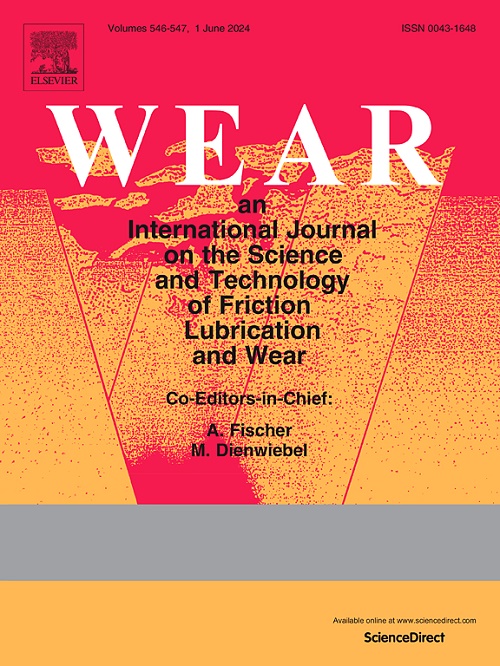Evaluation of lubrication mechanism of hybrid nanolubricants in turning hardened AISI D6 tool steel
IF 5.3
1区 工程技术
Q1 ENGINEERING, MECHANICAL
引用次数: 0
Abstract
Turning of hardened tool steels has posed a significant challenge for machining professionals. Usually, hardened tool steels are machined under dry with ceramic or PCBN inserts. However, dry machining imposes a condition where high cutting temperatures are developed, which becomes prohibitive when the part's geometric and dimensional accuracy is required. On the other hand, using mineral oil-based cutting fluid has encountered increasing restrictions because of its unsustainable nature. In this context, developing new sustainable lubri-cooling techniques, such as using vegetable oils blended with nanoparticles, could be an appropriate alternative. Thus, the main objective of this study was to investigate the performance of three different vegetable oil-based nanolubricants blended with three different nanoparticles (CuO, a-C:H, and CuO + a-C:H), applied under MQL when machining a quenched and tempered AISI D6 tool steel. For this purpose, facing turning trials were performed using solid PCBN inserts with the following cutting parameters: Vc = 100 m/min, ap = 0.3 mm, and f = 0.1 mm/rev. For comparison, facing turning tests were performed under dry and pure vegetable oil (without nanoparticles) and applied under MQL. Output variables included average surface roughness (Ra), flank wear (VBC), wear mechanisms of the cutting edge, chip shape, and chip compression ratio (Rc). The results showed that the vegetable oil-based nanolubricants applied under MQL improved the tribological conditions in the chip-tool and workpiece-tool interfaces, mainly in the case of CuO + a-C:H nanolubricant. In this case, it enhanced the lubricating action of the vegetable oil, decreasing cutting tool wear probably because of the combination of rolling mechanism, - provided by the CuO nanoparticles, and the formation of a protective film, supplied by the a-C:H nanoparticles.
评估混合纳米润滑剂在车削淬硬 AISI D6 工具钢中的润滑机理
车削淬硬工具钢对机械加工专业人员来说是一项重大挑战。通常,淬硬工具钢使用陶瓷或 PCBN 刀片进行干式加工。然而,干式加工会产生较高的切削温度,当零件的几何和尺寸精度要求较高时,这种加工方式就会变得非常困难。另一方面,使用矿物油基切削液也因其不可持续性而受到越来越多的限制。在这种情况下,开发新的可持续润滑冷却技术(如使用掺有纳米颗粒的植物油)可能是一个合适的替代方案。因此,本研究的主要目的是调查三种不同的植物油基纳米润滑剂与三种不同的纳米颗粒(CuO、a-C:H 和 CuO + a-C:H)混合后,在 MQL 下加工淬火和回火 AISI D6 工具钢时的性能。为此,使用实心 PCBN 刀片进行了端面车削试验,切削参数如下:Vc = 100 m/min,ap = 0.3 mm,f = 0.1 mm/rev。为了进行比较,还在干燥和纯植物油(不含纳米颗粒)条件下进行了端面车削试验,并在 MQL 条件下进行了应用。输出变量包括平均表面粗糙度 (Ra)、侧面磨损 (VBC)、切削刃磨损机制、切屑形状和切屑压缩率 (Rc)。结果表明,在 MQL 条件下使用的植物油基纳米润滑剂改善了切屑-刀具和工件-刀具界面的摩擦学条件,主要是在 CuO + a-C:H 纳米润滑剂的情况下。在这种情况下,它增强了植物油的润滑作用,减少了切削刀具的磨损,这可能是因为结合了滚动机制(由纳米 CuO 提供)和保护膜的形成(由纳米 a-C:H 提供)。
本文章由计算机程序翻译,如有差异,请以英文原文为准。
求助全文
约1分钟内获得全文
求助全文
来源期刊

Wear
工程技术-材料科学:综合
CiteScore
8.80
自引率
8.00%
发文量
280
审稿时长
47 days
期刊介绍:
Wear journal is dedicated to the advancement of basic and applied knowledge concerning the nature of wear of materials. Broadly, topics of interest range from development of fundamental understanding of the mechanisms of wear to innovative solutions to practical engineering problems. Authors of experimental studies are expected to comment on the repeatability of the data, and whenever possible, conduct multiple measurements under similar testing conditions. Further, Wear embraces the highest standards of professional ethics, and the detection of matching content, either in written or graphical form, from other publications by the current authors or by others, may result in rejection.
 求助内容:
求助内容: 应助结果提醒方式:
应助结果提醒方式:


